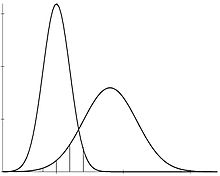I have recently thought about an alternative way of "equivalence testing" based on a distance between the two distributions rather than between their means.
There are some methods providing confidence intervals for the overlap of two Gaussian distributions: 
The overlap $O(P_1,P_2)$ of (between?) two distributions $P_1$ and $P_2$ has a nice probabilistic interpretation: $$1-O(P_1,P_2)= TV(P_1,P_2)$$
where $TV(P_1,P_2) = \sup_A \big|P_1(A) - P_2(A) \big|$ is the total variation distance between $P_1$ and $P_2$.
That means that, for example, if $O(P_1,P_2)>0.9$ then the probabilities given by $P_1$ and $P_2$ of any event do not differ more than $0.1$. Roughly speaking, the two distributions make the same predictions up to $10\%$.
Thus, instead of using an acceptance criterion based on a critical value for the difference between the means $\mu_1$ and $\mu_2$, as in classical equivalence testing, we could base it on a critical value for the difference between the probabilities of the predictions given by the two distributions.
I think there's an advantage in terms of "objectiveness" of the criterion. The critical value of $|\mu_1 - \mu_2|$ should be given by an expert of the real problem: this should be a value beyond which the difference has a practical importance. But sometimes nobody has a solid knowledge about the real problem and there's no expert able to provide a critical value. Adopting a conventional critical value about $TV(P_1,P_2)$ could be a way to a criterion not depending on the physical problem under consideration.
In the Gaussian case with same variances, the overlap is one-to-one related to the standardized mean difference $\frac{|\mu_1-\mu_2|}{\sigma}$.

